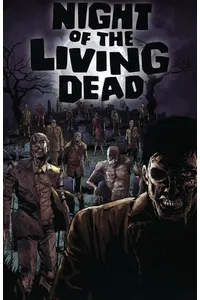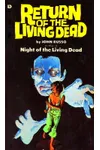Step into the chilling world of the Living Dead series, where flesh-hungry zombies lurch from the shadows and humanity’s survival hangs by a thread! Pioneered by John A. Russo, this groundbreaking series kicked off with the iconic Night of the Living Dead and redefined the zombie genre with its blend of visceral horror and raw human drama. Whether you’re a horror aficionado or just curious about the undead, the Living Dead books offer a pulse-pounding journey into a world where the dead refuse to stay buried.
From rural farmhouses to desolate towns, Russo’s stories capture the terror of ordinary people facing an apocalyptic nightmare. With themes of societal collapse, survival, and the fragility of human nature, the series is as thought-provoking as it is terrifying. Let’s dive into the origins, stories, and lasting impact of this zombie classic!
How Living Dead Began
The Living Dead series sprang from the 1968 film Night of the Living Dead, co-written by John A. Russo and George A. Romero. Inspired by Richard Matheson’s 1954 novel I Am Legend, Russo crafted a story about ghouls rising from graves to feast on the living. After the film’s success, Russo and Romero parted ways, with Russo retaining rights to the 'Living Dead' title. He turned his vision into novels, starting with the 1974 novelization of Night of the Living Dead, laying the foundation for a literary universe that would terrify generations.
Russo’s goal was to expand the zombie mythos beyond the screen, blending gritty horror with social commentary. His novels explored what happens when society crumbles under the weight of an undead plague, making the series a cornerstone of modern zombie fiction.
The Heart of Living Dead
The Living Dead series includes several key books, each amplifying the horror of a zombie-infested world. Night of the Living Dead (1974) follows seven strangers trapped in a Pennsylvania farmhouse as flesh-eating ghouls close in. The novel, based on the film’s screenplay, dives deeper into characters like Ben and Barbara, capturing their desperation and fractured alliances. Return of the Living Dead (1978) is a standalone sequel set a decade later, where a bus crash in a small town unleashes a new zombie outbreak, exploring how survivors grapple with a recurring nightmare.
Epidemic of the Living Dead (2018) introduces a fresh twist, with infected needles spreading a zombie plague in Chapel Grove, Pennsylvania. The story delves into the horror of infected newborns, pushing the genre’s boundaries. Escape of the Living Dead, originally a 2005 comic series, was adapted from Russo’s unproduced screenplay, depicting zombies breaking free from a military base. Themes of societal breakdown, human greed, and moral decay run through the series, set against bleak, rural landscapes that amplify the claustrophobic dread.
Russo’s style is fast-paced and unapologetically gory, yet it’s the human element—families torn apart, communities fractured—that gives the series its emotional weight. His zombies aren’t just monsters; they’re a mirror reflecting humanity’s darkest impulses.
Why Living Dead Resonates
The Living Dead series reshaped the zombie genre by introducing tropes like flesh-eating undead and apocalyptic stakes, influencing works from The Walking Dead to World War Z. Russo’s focus on everyday people facing extraordinary horrors made the series relatable, while its social commentary—critiquing capitalism, authority, and human nature—added depth. Fans praise its raw intensity and ability to evoke paranoia, cementing its cult status among horror enthusiasts.
Despite mixed reviews for some sequels, the series’ legacy endures through its bold storytelling and fearless exploration of taboo themes. It remains a must-read for anyone fascinated by zombies or the fragility of civilization.
- First Book Published: Night of the Living Dead, 1974
- Key Author: John A. Russo
- Genre: Zombie Horror
- Notable Adaptation: 1968 film Night of the Living Dead
Grab Night of the Living Dead and plunge into the Living Dead’s terrifying world of zombies and survival! Whether you’re hiding in a farmhouse or braving a plagued town, Russo’s books promise a thrilling, spine-chilling ride.

